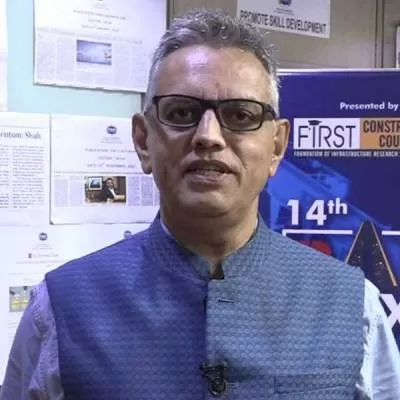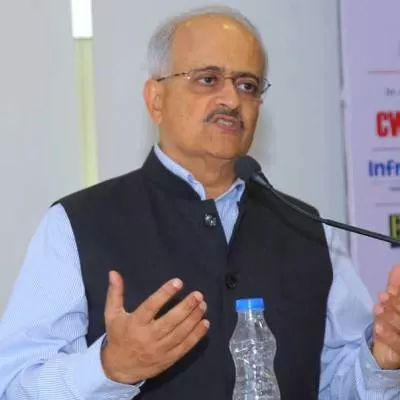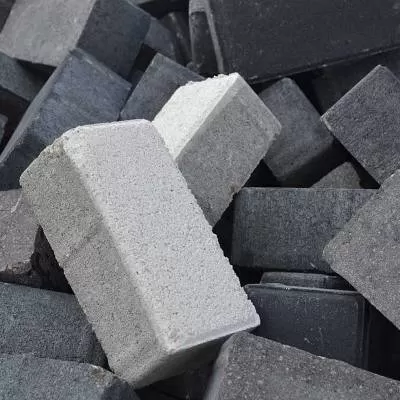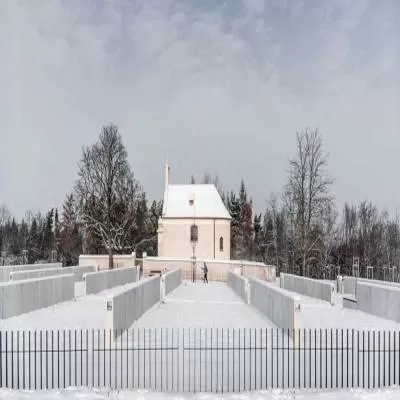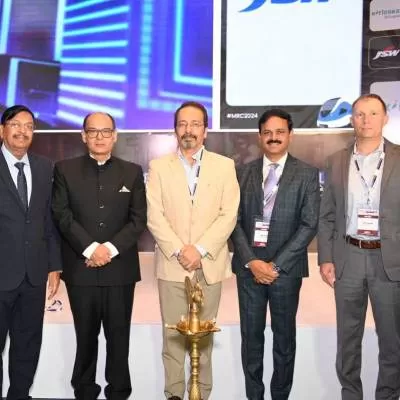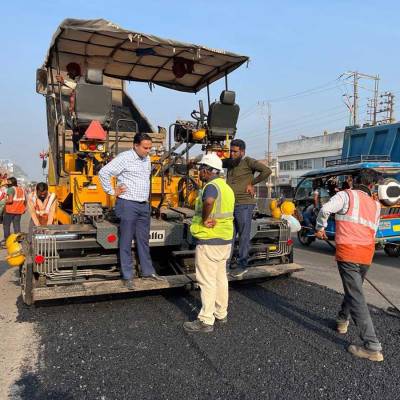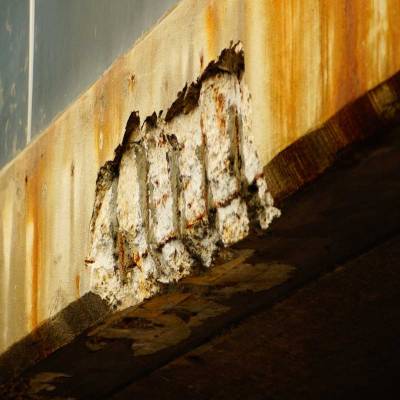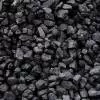- Home
- Building Material
- Concrete
- Concrete solution
Concrete solution
Reactive silica powder concrete, a new class of cementitious composite, is a result of advances in technology. This high-strength and highly durable material offers unique solutions to challenges in the construction of high-rise buildings, bridges, underground structures, nuclear power plant storages, defence installations and other applications that require strength, durability, prolonged lifespan and safety.
The genesis
In conventional construction practices, concrete minimises cost, provides adequate workability and strength by minimising the volume of cement and maximising the volume of aggregates with the addition of water and super-plasticisers. However, the use of excess water and cementitious materials created flaws in the cement matrix including loss of homogeneity, presence of large number of capillary pores, inferior quality of paste, poor bond between the interface of aggregates and cement paste, voids in the concrete, and entrapped air. In turn, this prevented the optimisation of strength in concrete and initiated the growth of micro cracks before application of loads converted them into mesco and macro cracks, ultimately resulting in failure at low strengths. Some of these flaws were eliminated during the development of high-performance concrete (HPC); but this too had certain limitations in gaining higher strengths after reaching a certain limiting value of strength. The coarse aggregates at this stage formed the weakest link in the concrete matrix, hindering further development and not letting it achieve better strength of 80 MPa.
Realisation dawns
The concept of developing ultra high-strength and highly durable concrete evolved with the realisation of its importance in critical applications such as storages in nuclear power plants, bridge construction and underground structures. Reactive powder concrete (RPC) eliminated the flaws of concrete and use of coarse aggregates that restricted the development of ultra high strength in HPC. These flaws were removed by maximising the solid material in the matrix achieved by designing the mixes with optimised gradation of granular constitutions containing very fine powders of cement, mineral admixture such as micro silica sand, quartz powder supported with minimum water and maximum dosage of admixtures. The maximum density of concrete was obtained by adopting particle packing theory. Addition of fibres was considered where ductility properties of concrete were important. The typical range of compressive strength in RPC ranged from 200 to 800 MPa.
RPC was first developed by P Richards and M Cheyrezy in the early 1990s at Bouygues Laboratory in France. Richards and Cheyrezy indicated the following principles for developing RPC: elimination of coarse aggregates for enhancement of homogeneity; utilisation of the pozzolanic properties of silica fume; optimisation of granular mixture for enhancement of compacted density; optimal usage of super-plasticiser to reduce w/c and improve workability; application of pressure (before and during setting) to improve compaction; post-set heat treatment for enhancement of microstructure; and addition of small-sized steel fibres to improve ductility.
Selecting the aggregates
The selection procedure of aggregates, quartz powder, silica fumes and steel fibres are critical in RPC. Some important parameters are indicated in Table 1 and Table 2. The major parameter that decides the quality of the mixture is the water demand for minimum flow of concrete. Generally, parameters of relative density (d0/ds) are considered to optimise the water content. The density d0 and ds are density of concrete and compacted density of mixture (no water or air). For RPC, the mixture density should be maximised to limit the water content.
Microstructure enhancement of RPC is obtained by heat curing and applying pressure during compaction. Here, the fully set concrete is heat cured at 90¦ for 28 days. The heat curing technique considerably accelerates the process of pozzolanic reaction and helps improve the microstructure of the hydrates. Pre-setting pressurisation has shown improvement in increasing the strength of concrete.
Ductile and durable
The ductility properties of RPC can be enhanced by addition of steel fibres. Straight steel fibres used typically are about 13 mm long, with a diameter of 0.15 mm. The fibres are introduced into the mixture at a ratio of between 1.5 and 3 per cent by volume. The cost-effective optimal dosage is equivalent to a ratio of 2 per cent by volume, or about 155 kg/cu m. The RPC family include two types of concrete designated as RPC 200 and RPC 800. RPC has ultra-high durability characteristics resulting from its extremely low porosity, low permeability, limited shrinkage and increased corrosion resistance. In comparison to HPC, there is no penetration of liquid and/or gas through RPC. The characteristics of RPC given in Table 3 enable its use in chemically aggressive environments.
The limitations
In RPC, the least costly materials are eliminated and replaced by more expensive elements. The fine sand used in RPC becomes equivalent to the coarse aggregate of conventional concrete, Portland cement plays the role of the fine aggregate and the silica fume that of the cement. The mineral component optimisation alone results in a substantial increase in cost over and above that of conventional concrete (three to five times higher than HPC).
Thus, RPC should be used in areas where substantial weight savings can be realised and where some of the remarkable characteristics of the material can be fully utilised. Owing to its high durability, RPC can even replace steel in compression members where durability issues are at stake. As RPC is in a developing stage, the long-term properties are yet to be established. Although the material is expensive, its low maintenance and repair cost, enhanced life-span offer long term benefits. The ultra high performance strength concrete is highly resistant to harmful entry of salts, chemicals, gases, etc making most useful concrete in marine structures and in places where sulphate attacks, alkali aggregates reactions, etc are more critical.
RPC is still not used in India. However, M/S Fosroc have conducted few mock up trials for 87 and 55 storied buildings in Mumbai and the decisions to use RPC in some areas of these building are awaited. Indians are bit hesitant to adopt RPC technology in the buildings and bridge constructions considering the fact their detailed design and construction aspects are not covered in the Indian Standards. However, internationally, this material is used in long span bridges, high rise buildings with slender members, nuclear waster storage zones and blast resistant panels.
Share your construction material with us at feedback@ASAPPmedia.com
Extensively used in the construction of buildings and bridges internationally, reactive silica powder concrete, as a construction material, holds immense promise for a large development market like India, says N VENKATESH. Reactive silica powder concrete, a new class of cementitious composite, is a result of advances in technology. This high-strength and highly durable material offers unique solutions to challenges in the construction of high-rise buildings, bridges, underground structures, nuclear power plant storages, defence installations and other applications that require strength, durability, prolonged lifespan and safety. The genesis In conventional construction practices, concrete minimises cost, provides adequate workability and strength by minimising the volume of cement and maximising the volume of aggregates with the addition of water and super-plasticisers. However, the use of excess water and cementitious materials created flaws in the cement matrix including loss of homogeneity, presence of large number of capillary pores, inferior quality of paste, poor bond between the interface of aggregates and cement paste, voids in the concrete, and entrapped air. In turn, this prevented the optimisation of strength in concrete and initiated the growth of micro cracks before application of loads converted them into mesco and macro cracks, ultimately resulting in failure at low strengths. Some of these flaws were eliminated during the development of high-performance concrete (HPC); but this too had certain limitations in gaining higher strengths after reaching a certain limiting value of strength. The coarse aggregates at this stage formed the weakest link in the concrete matrix, hindering further development and not letting it achieve better strength of 80 MPa. Realisation dawns The concept of developing ultra high-strength and highly durable concrete evolved with the realisation of its importance in critical applications such as storages in nuclear power plants, bridge construction and underground structures. Reactive powder concrete (RPC) eliminated the flaws of concrete and use of coarse aggregates that restricted the development of ultra high strength in HPC. These flaws were removed by maximising the solid material in the matrix achieved by designing the mixes with optimised gradation of granular constitutions containing very fine powders of cement, mineral admixture such as micro silica sand, quartz powder supported with minimum water and maximum dosage of admixtures. The maximum density of concrete was obtained by adopting particle packing theory. Addition of fibres was considered where ductility properties of concrete were important. The typical range of compressive strength in RPC ranged from 200 to 800 MPa. RPC was first developed by P Richards and M Cheyrezy in the early 1990s at Bouygues Laboratory in France. Richards and Cheyrezy indicated the following principles for developing RPC: elimination of coarse aggregates for enhancement of homogeneity; utilisation of the pozzolanic properties of silica fume; optimisation of granular mixture for enhancement of compacted density; optimal usage of super-plasticiser to reduce w/c and improve workability; application of pressure (before and during setting) to improve compaction; post-set heat treatment for enhancement of microstructure; and addition of small-sized steel fibres to improve ductility. Selecting the aggregates The selection procedure of aggregates, quartz powder, silica fumes and steel fibres are critical in RPC. Some important parameters are indicated in Table 1 and Table 2. The major parameter that decides the quality of the mixture is the water demand for minimum flow of concrete. Generally, parameters of relative density (d0/ds) are considered to optimise the water content. The density d0 and ds are density of concrete and compacted density of mixture (no water or air). For RPC, the mixture density should be maximised to limit the water content. Microstructure enhancement of RPC is obtained by heat curing and applying pressure during compaction. Here, the fully set concrete is heat cured at 90¦ for 28 days. The heat curing technique considerably accelerates the process of pozzolanic reaction and helps improve the microstructure of the hydrates. Pre-setting pressurisation has shown improvement in increasing the strength of concrete. Ductile and durable The ductility properties of RPC can be enhanced by addition of steel fibres. Straight steel fibres used typically are about 13 mm long, with a diameter of 0.15 mm. The fibres are introduced into the mixture at a ratio of between 1.5 and 3 per cent by volume. The cost-effective optimal dosage is equivalent to a ratio of 2 per cent by volume, or about 155 kg/cu m. The RPC family include two types of concrete designated as RPC 200 and RPC 800. RPC has ultra-high durability characteristics resulting from its extremely low porosity, low permeability, limited shrinkage and increased corrosion resistance. In comparison to HPC, there is no penetration of liquid and/or gas through RPC. The characteristics of RPC given in Table 3 enable its use in chemically aggressive environments. The limitations In RPC, the least costly materials are eliminated and replaced by more expensive elements. The fine sand used in RPC becomes equivalent to the coarse aggregate of conventional concrete, Portland cement plays the role of the fine aggregate and the silica fume that of the cement. The mineral component optimisation alone results in a substantial increase in cost over and above that of conventional concrete (three to five times higher than HPC). Thus, RPC should be used in areas where substantial weight savings can be realised and where some of the remarkable characteristics of the material can be fully utilised. Owing to its high durability, RPC can even replace steel in compression members where durability issues are at stake. As RPC is in a developing stage, the long-term properties are yet to be established. Although the material is expensive, its low maintenance and repair cost, enhanced life-span offer long term benefits. The ultra high performance strength concrete is highly resistant to harmful entry of salts, chemicals, gases, etc making most useful concrete in marine structures and in places where sulphate attacks, alkali aggregates reactions, etc are more critical. RPC is still not used in India. However, M/S Fosroc have conducted few mock up trials for 87 and 55 storied buildings in Mumbai and the decisions to use RPC in some areas of these building are awaited. Indians are bit hesitant to adopt RPC technology in the buildings and bridge constructions considering the fact their detailed design and construction aspects are not covered in the Indian Standards. However, internationally, this material is used in long span bridges, high rise buildings with slender members, nuclear waster storage zones and blast resistant panels. Share your construction material with us at feedback@ASAPPmedia.com



